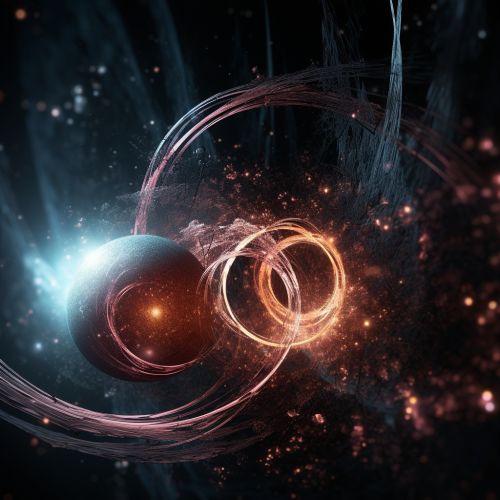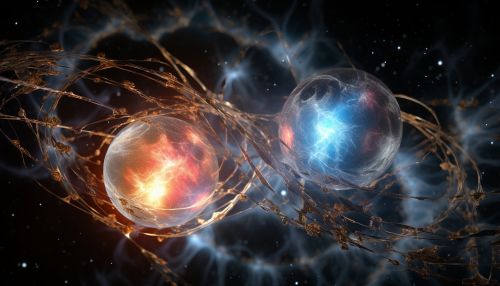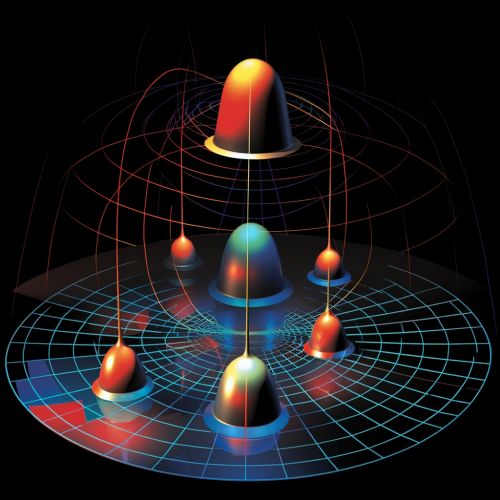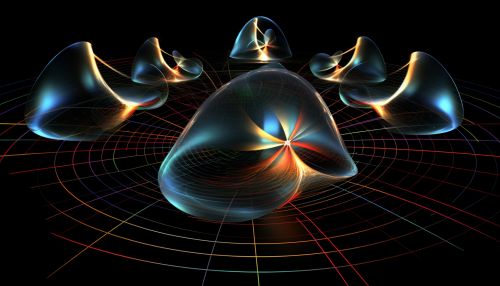Quantum entanglement
Introduction
Quantum entanglement is a physical phenomenon that occurs when pairs or groups of particles become entangled in such a way that the quantum state of each particle cannot be described independently of the state of the other(s), even when the particles are separated by a large distance. The phenomenon was first postulated by Albert Einstein, Boris Podolsky, and Nathan Rosen in 1935, in what is now known as the EPR paradox.


Quantum Mechanics and Entanglement
Quantum entanglement is a fundamental aspect of Quantum mechanics, a branch of physics that describes the behavior of particles on the smallest scales. Quantum mechanics is characterized by wave-particle duality, superposition, and entanglement. These properties define a world quite different from the one described by classical physics.
Entanglement Creation
Entanglement can be created in various ways, such as through the decay of a particle into two or more others, or through the interaction of two particles. In the case of decay, the total quantum state of the system must be conserved, leading to correlations between the properties of the decay products.


Properties of Entangled States
Once particles become entangled, their properties become correlated. If one particle is measured, the state of the other particle(s) is instantly determined, no matter the distance between them. This phenomenon, known as non-locality, appears to violate the principle of locality in relativity, which states that information cannot travel faster than light.
EPR Paradox and Bell's Theorem
The EPR paradox was a thought experiment proposed by Einstein, Podolsky, and Rosen in 1935 to challenge the completeness of quantum mechanics. They argued that quantum mechanics, with its entangled states, was incompatible with local realism.
John Bell later formulated Bell's theorem, which showed that the predictions of quantum mechanics regarding entangled particles were incompatible with a large class of theories known as local hidden variable theories. Experiments have since been conducted that support the predictions of quantum mechanics over local hidden variable theories.


Applications of Quantum Entanglement
Quantum entanglement has potential applications in various areas of technology, including quantum computing, quantum cryptography, and quantum teleportation.
Quantum computing uses quantum bits, or qubits, which can be in a superposition of states, allowing for greater computational power than classical bits. Entanglement is a key resource in many quantum computing algorithms.
Quantum cryptography uses the principles of quantum mechanics, including entanglement, to create secure communication channels. The no-cloning theorem in quantum mechanics ensures that any attempt to eavesdrop on a quantum communication would be detected.
Quantum teleportation is a process in which the state of a quantum system can be transmitted from one location to another, with the help of entanglement and classical communication. This should not be confused with teleportation in the sense of science fiction, as no matter is transferred in the process.


Conclusion
Quantum entanglement, with its counterintuitive properties and potential applications, remains one of the most fascinating aspects of quantum mechanics. It challenges our understanding of the world at the most fundamental level and continues to be an active area of research in physics.
